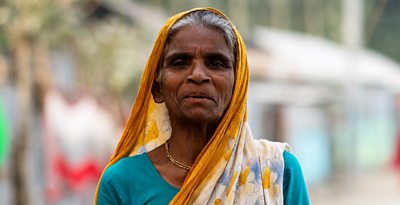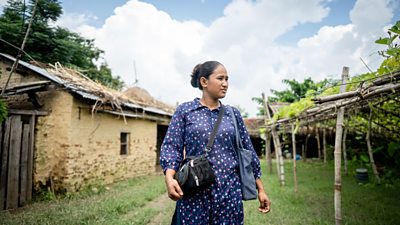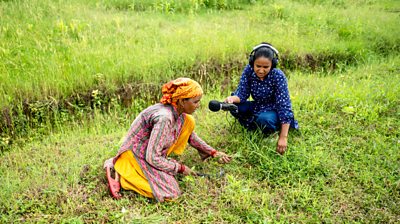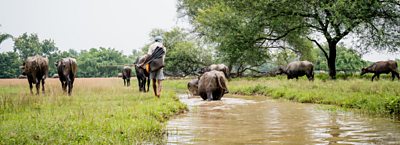On a hot and wet day in Dhaka, more than 20 of Bangladesh’s most prominent journalists came together with a common goal – to discuss the weather.
But this meeting of media minds wasn’t about small talk. It was about big ideas. Ideas about how they, as the country’s gatekeepers of information, could use the power of their collective reach to enhance people’s understanding of the climate issues increasingly impacting the region.
For journalists around the world, staying ahead of unpredictable and unprecedented weather events caused by climate change is a constant challenge. Between 1970 and 2021, around 12,000 disasters involved extreme weather, climate and water-related hazards. These hazards resulted in staggering losses, including an estimated US$4.3 trillion in economic damage and the deaths of approximately 2 million people. The burden fell disproportionately on low and middle-income nations, which accounted for 90% of the fatalities.
Weather and climate information services play an essential role in supporting people to react to changing weather patterns and resulting natural hazards – from cyclones to floods and landslides – by providing vital information that enables action, particularly during early warnings and risk assessments.
��ѿ��ý Media Action’s BRIDGES project aims to build climate resilience through strengthened communication – from observing and forecasting the weather, to supporting disaster preparedness, early action and longer-term adaptation to climate change.
Strengthening climate communication
The BRIDGES Bangladesh team brought together 21 senior media professionals – chief news editors from national media outlets – to discuss the shared realities of disseminating information during extreme weather events, from administrative challenges to financial constraints.
The workshop, titled “Reporting for Impact: Enhancing Weather and Climate Information Services,” was essential in shaping their perceptions of the importance of presenting weather and climate content with the prominence it deserves. Despite the media’s potential to reach last-mile communities with timely, accurate and actionable information, gaps remain in thematic understanding, skills and motivation.
Our research shows that 92% of people in Bangladesh want advice on how to prepare for extreme weather events, but only 39% said they understood the language used around climate information, and just 20% said it was easy to understand.

We hear that it is 38 degrees Celsius and that this heat will continue for the next few days. But we don’t know what to do with this information. We also don’t know how to protect our vegetables in such extreme heat.”
Voices like these echo concerns shared across other BRIDGES countries. In Nepal, for instance, community radio stations are working to close this information gap by simplifying complex meteorological data and making it understandable to everyone.
Under the BRIDGES project, we learned to simplify technical terms, and make weather and disaster news clearer and more useful. Since weather-related disasters mostly affect remote and indigenous communities, we now broadcast weather news in four major local languages.”

Balika adds that the project has transformed how her team serves their listeners:
��ѿ��ý Media Action has significantly strengthened our ability to produce timely and meaningful weather and disaster content, helping us serve our audiences better during monsoon seasons.”
Similarly, in Nepal, newsrooms are making audience engagement central to their approach:
Since the BRIDGES project, we’ve made weather and disaster news a priority. When people comment or ask questions in our social media posts, we make sure those questions are heard by the relevant experts. It’s become a two-way conversation – not just broadcasting information, but connecting communities with the answers they need.”
Telling human stories of resilience
Behind every climate story are the people most affected. For Bindu Chaudhary, a 30-year-old producer at Gurbaba FM in Nepal, the mission is deeply personal.

As someone who witnessed the destruction caused by the flood, helping save people with trusted information feels like a personal mission.”
Bindu is a flood survivor. During heavy monsoon rains ten years ago, surging water from the Duduwa River inundated her mud house at midnight. Her family now lives in a safer area, but each rainfall brings back that haunting memory.
Every morning, she rides her scooter along a cratered dirt road to reach the radio station, which is run by a small team of seven. She checks updates from Nepal’s Department of Hydrology and Meteorology, National Disaster Risk Reduction and Management Authority, and the government hotline (1155) before producing her show Hello Mausam! (“Hello Weather!”).
Using credible, verified sources, she crafts clear, actionable weather updates – when heavy rain is expected, how to prepare, and who to contact if flooding occurs. She also produces social media content to reach younger audiences and those with smartphones.

Bindu is one of 30 journalists trained under the BRIDGES project to share trusted weather and climate information that encourages communities to take action.
Connecting the dots across regions
Across BRIDGES countries — Bangladesh, Nepal and Kenya — journalists are helping audiences translate weather forecasts into life-saving action, by listening to their audiences and understanding what they need.
“As a fishmonger, I am heavily affected by the floods and increasing water levels in Lake Victoria. As a result, I abandoned selling fish because of reduced prices. Now, I no longer have a source of income and went back home to be a housewife.”
Looking ahead
Journalists have an essential role in sharing accurate, trusted weather and climate information to those who need it most. During the Dhaka workshop, participants committed to improving the editorial treatment of climate stories and supporting future capacity-building activities for local journalists.
Their involvement will offer valuable learning opportunities and motivation for reporters to produce stronger, more impactful content to inform audiences around the country - and, ultimately, save lives.
Sharing our insights at IUCN
��ѿ��ý Media Action is an official media partner of the International Union for Conservation of Nature’s (IUCN) World Conservation Congress in Abu Dhabi. As part of this collaboration, ��ѿ��ý Media Action will host a media pavilion throughout the Congress (9–13 October 2025), with contributions from the ��ѿ��ý Studios Natural History Unit exploring how storytelling can inspire and inform audiences about the intertwined issues of threatened biodiversity and the changing climate.
Search by Tag:
- Tagged with Nepal Nepal
- Tagged with Bangladesh Bangladesh
- Tagged with Kenya Kenya
- Tagged with Asia Asia
- Tagged with Africa Africa
- Tagged with Climate Action Climate Action

